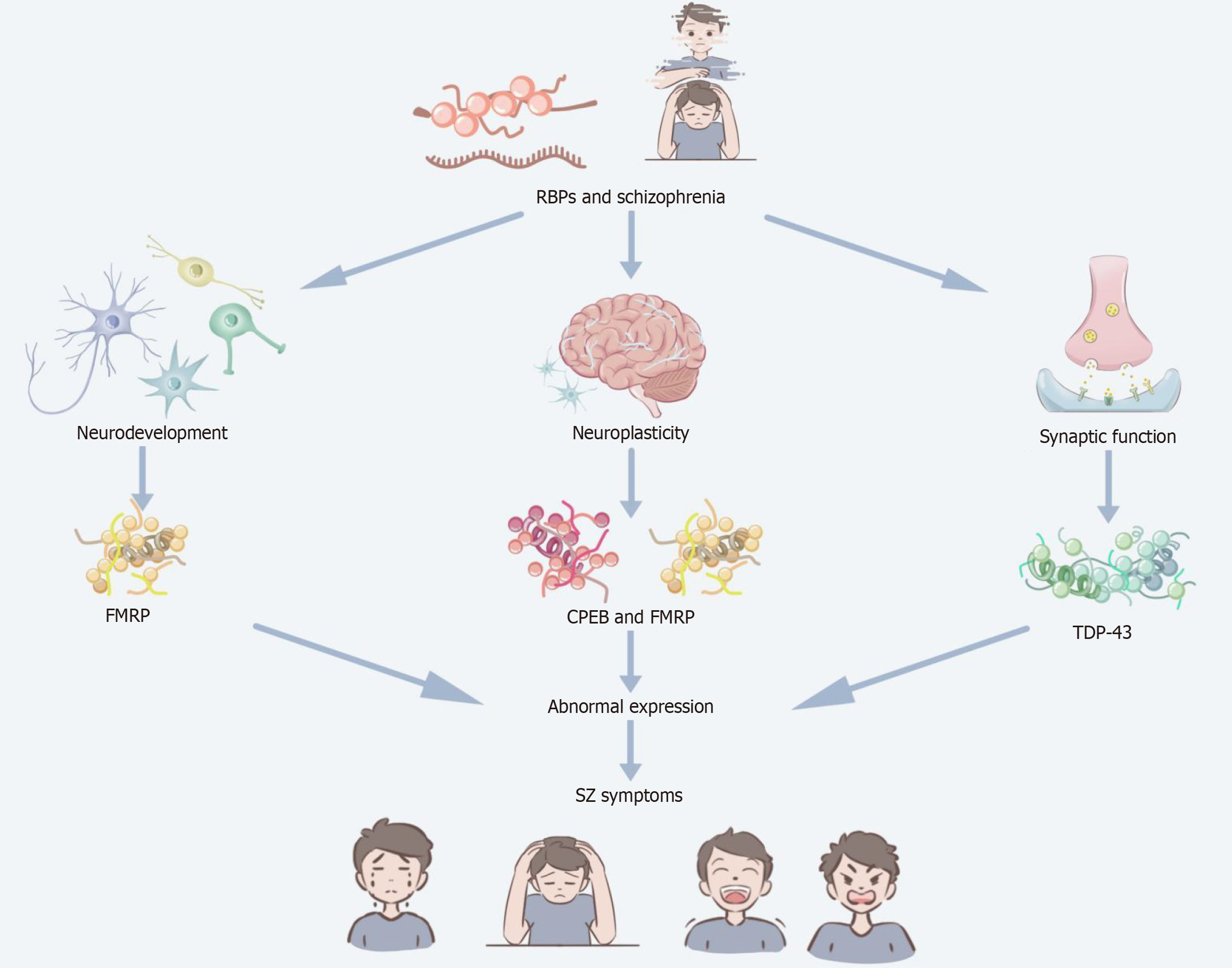Copyright
©The Author(s) 2025.
World J Psychiatry. Sep 19, 2025; 15(9): 107498
Published online Sep 19, 2025. doi: 10.5498/wjp.v15.i9.107498
Published online Sep 19, 2025. doi: 10.5498/wjp.v15.i9.107498
Figure 2 Relationship between RNA binding proteins and schizophrenia.
This figure depicts the relationship between the roles of RNA binding proteins (RBPs) in schizophrenia (SZ), showing how RBPs are associated with SZ symptoms by shaping neurodevelopment, neuroplasticity, and synaptic function. RBPs have been associated with neurodevelopmental abnormalities through their impact on the role of fragile X mental retardation protein (FMRP) in neural differentiation and synapse formation. RBPs (e.g., cytoplasmic polyadenylation element-binding protein and FMRP) regulate synaptic plasticity and have been associated with impaired cognitive and affective functioning in SZ patients. TAR DNA-binding protein 43 in RBPs plays a crucial role in synaptic function and its abnormalities have been associated with SZ. The relationship between abnormal expression of RBPs (especially FMRP, cytoplasmic polyadenylation element-binding protein, and TAR DNA-binding protein 43) and SZ symptoms, such as cognitive impairment and affective dysregulation, is demonstrated below. RBPs: RNA binding proteins; FMRP: Fragile X mental retardation protein; SZ: Schizophrenia; CPEB: Cytoplasmic polyadenylation element-binding protein; TDP-43: TAR DNA-binding protein 43.
- Citation: Lu Y, Kong JD, Zhao LN. Role of RNA-binding proteins in exercise-induced mRNA regulation: Unveiling biomarkers and therapeutic targets for schizophrenia. World J Psychiatry 2025; 15(9): 107498
- URL: https://www.wjgnet.com/2220-3206/full/v15/i9/107498.htm
- DOI: https://dx.doi.org/10.5498/wjp.v15.i9.107498









